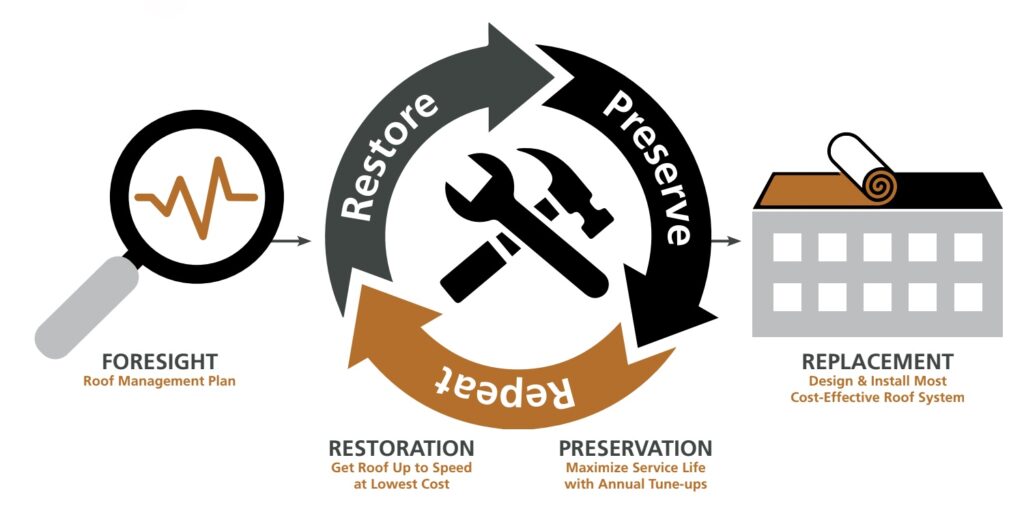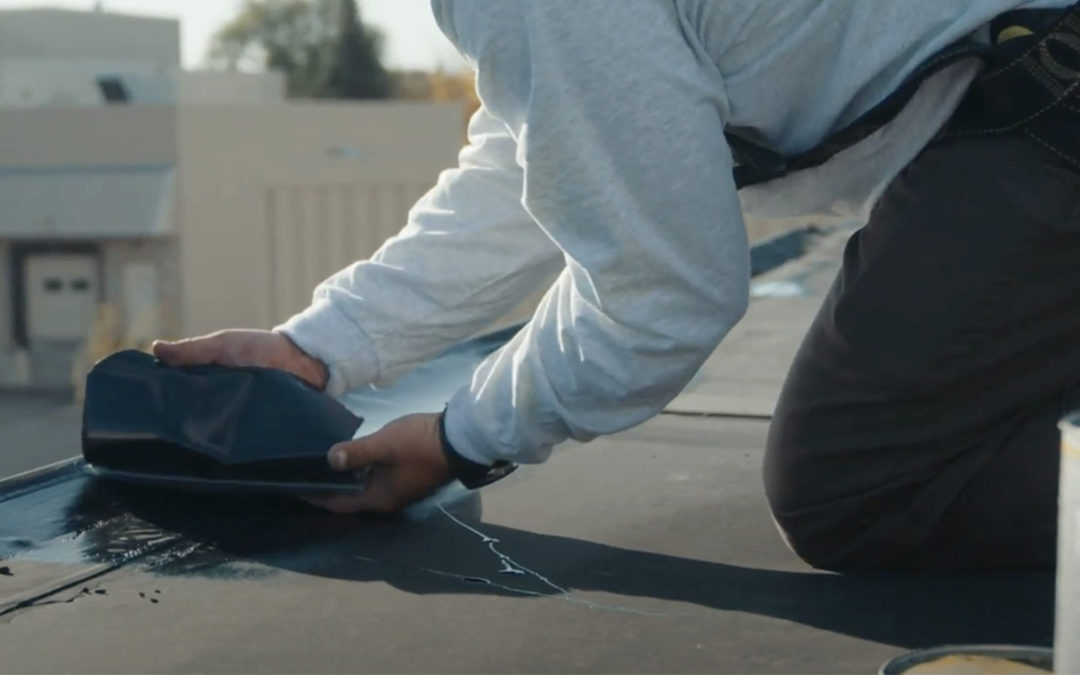Does your building really need a new roof? Is replacing your roof the only option?
The surprise of a leaking roof is enough to test any business owner, property manager, or maintenance manager. Most people would initially think that they need to call someone to come and replace their roof, but not so fast — there are steps that your roofing contractor can take to repair your roof and extend its life, instead of just replacing it entirely. If you didn’t need a new roof, wouldn’t you want to know that?
At Weather Shield Roofing Systems, we’re committed to doing everything we can to not replace your roof through our Max Life Roof Care Program.
Check out the quick video below to learn how the Max Life Roof Care Program can help you get the most out of your commercial roof, or keep reading to learn more about the steps you can take to avoid a total roof replacement.
Restore, preserve, repeat
This is a simple process designed to help you avoid replacing your commercial roof. In our Max Life Roof Care Program, there are three key steps we take that will help you prevent replacing your commercial roof before it needs to be.
The first step is foresight. This is where we do an in-depth analysis of your company’s roof. We will use our infrared and nuclear scanning technology to do a forensic analysis on your roof in order to learn exactly which parts need to be replaced and which parts can be recycled.
Step two is where the restoration of your commercial flat roof will take place. We like to get your roof up to speed at the lowest cost possible. Performing repairs and making sure your roof is in a serviceable condition is our goal here. Our team has expertise in repairing roofs and our service department is devoted to helping you avoid replacing your company’s roof.
Lastly, is preservation. The preservation stage is essential after the restoration phase. Here we will preserve your roof for years to come with ongoing “tune-ups”. These tune-ups will help preserve your roof for the future and allow you to budget for the big investment of replacing your commercial roof once you actually need to.

What are some other steps I can take to avoid replacing my roof?
Other steps to take to avoid replacing your roof include:
- Performing Regular Inspections: These will help identify any signs of damage such as cracks, leaks, or any other issues with your roof. Early detection can prevent further damage.
- Maintaining Proper Drainage: Drainage for your commercial roof is essential to prevent water pooling and causing destruction. Keep gutters and downspouts clear of debris, leaves, and dirt.
- Cleaning Your Roof: Clean the roof of your commercial building to remove dirt, algae, moss, or other organic growth.
- Clearing Debris: Regularly clear away debris from your roof, like leaves, branches, and dirt. This debris can trap moisture if it accumulates and accelerate roof deterioration.
- Scheduling Prompt Repairs: Address any issues with your commercial flat roof promptly to prevent them from worsening and causing more damage.
- Trimming Surrounding Vegetation: Stay on top of trimming back overhanging branches and remove vegetation near the roof to prevent damage caused by rubbing, scratching, or falling debris.
When is it time to replace?
There are typically two common mistakes when it comes to replacing a commercial roof. One is that companies will replace their roof too early because it has a leak. On the other end of the spectrum, there are companies that wait too long to replace their roof to try and save money, but this ends up causing problems to other parts of the building.
If you don’t want to fall under either of those categories, be sure to have your roof regularly inspected.
Some signs that your roof may need replacement are as follows, but please remember, just because your roof shows one of these signs, does NOT mean it has to be replaced. In most cases, there are still steps to take to repair your roof.
- Your roof is past the normal life expectancy of a commercial roof, which is typically 20-30 years
- There is pooling water and low spots on the roof
- Your roof is showing signs of blistering or bubbling
- There is visible damage from storms
- There is viable damage from flashing and/or pitch pans
- There are holes or tears in the roof membrane
Can my roof be repaired instead of replaced?
Just because your roof has a leak or a problem area, doesn’t mean that it has to be replaced. Most roofing companies are in the business of selling roof replacements, but at Weather Shield, we’re here to help maximize the life of your roof and avoid a full replacement until absolutely necessary through our Max Life Roof Care Program.

